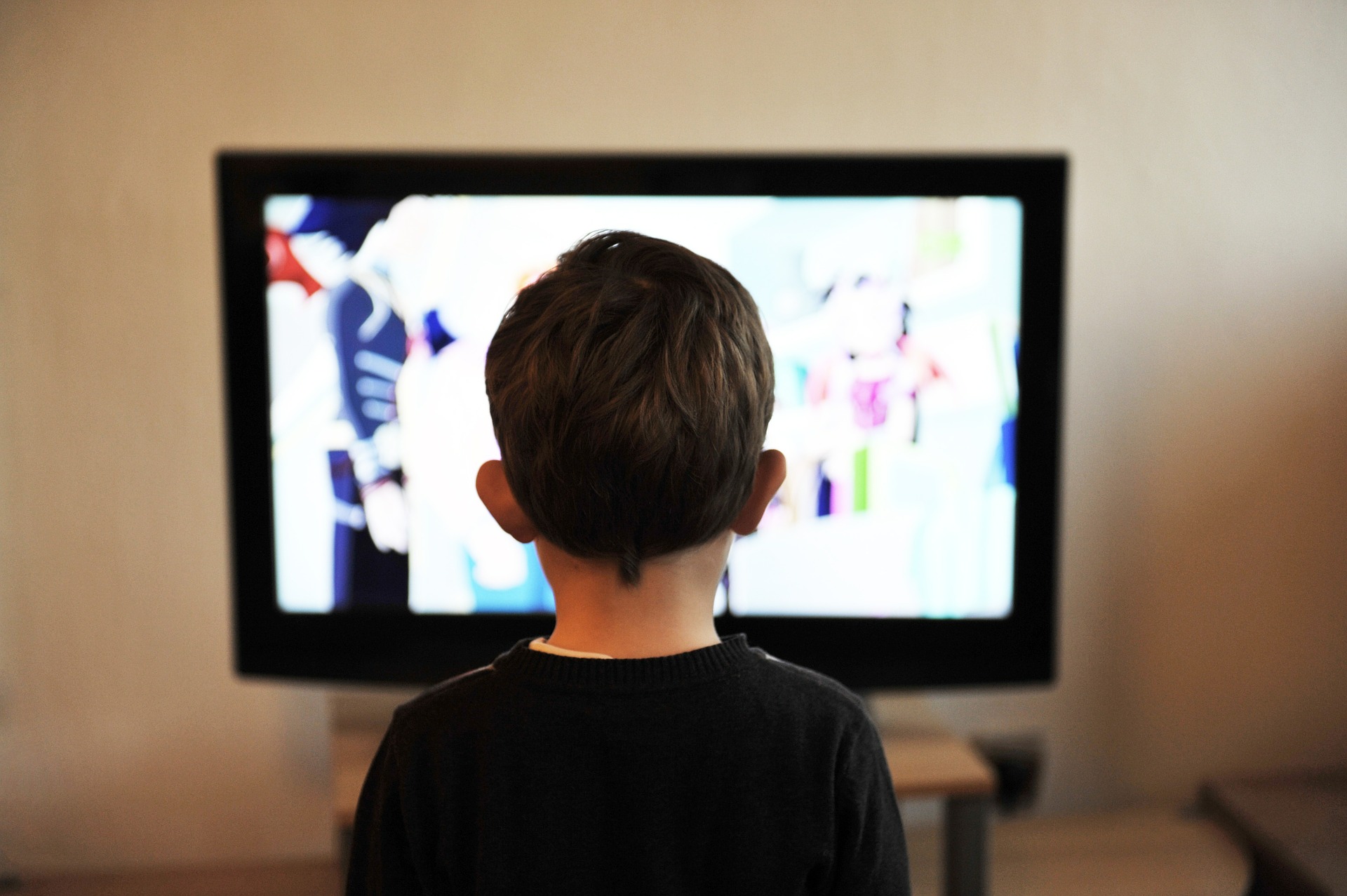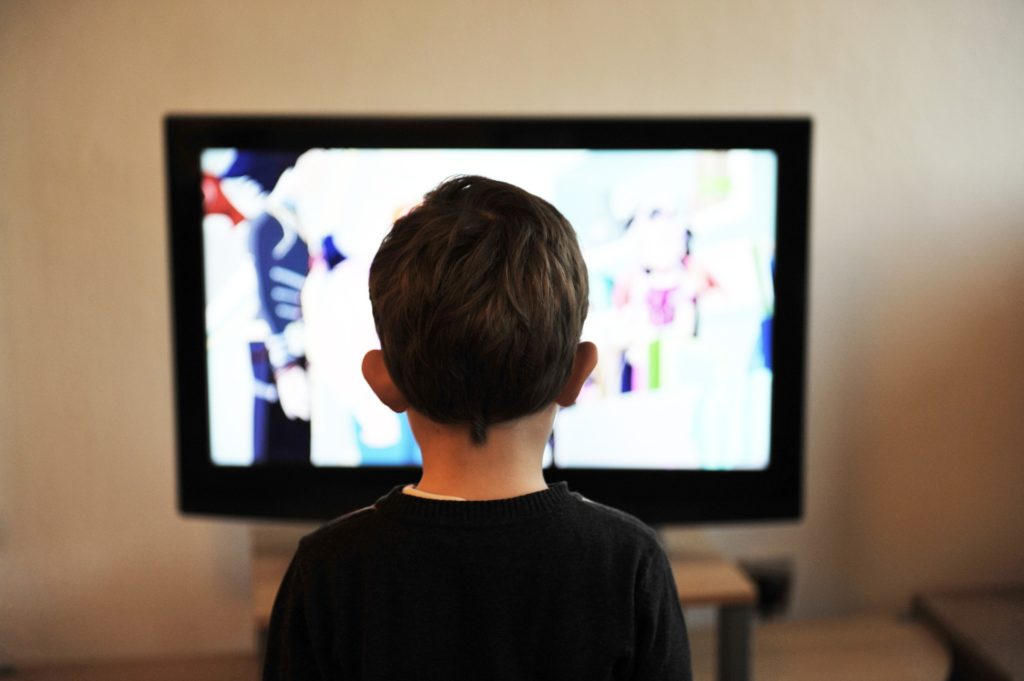
The Effect of Technology on Children’s Social Skills and Fitness Levels*
Technology is fast evolving and now, kids of all ages seem to be getting involved with everything from tablets and phones, to social media and smart TVs. But what effect is this having on their social and physical wellbeing?
The impact of devices and online platforms has whipped up heated debates for many years, with some experts stating that technology causes poor communication skills and reduced physical activity, and others claiming that gadgets can help kids keep in touch with peers and boost physical fitness. Here, we explore the effects of technology on children’s health and ability to socialise…
Technology Use of Kids in the UK
According to BARB — Broadcasters’ Audience Research Board — as of the end of 2017, 11.54 million households owned one television set, while 8.66 million had two, 4.11 million owned three, and 1.75 million had four. Another recent survey by Samsung found that UK households also have on average 18 smart devices — including mobiles, tablets and TVs — while other research has forecasted that iPad use will increase to 18.1 million users by 2019. Although this data doesn’t indicate how much time parents and guardians allow their kids to consume technology, it at least suggests that most kids at least have access to several devices regularly in their homes. For some people, this opportunity can make it easier for youngsters to opt for sedentary activities, rather than playing sports or physical games, which could impact negatively on their physical fitness.
But what about emerging technologies? Smart speakers, like Amazon’s Alexa and Microsoft’s Cortana, are growing in popularity in the UK. Futuresource found that there was a global year-on-year increase of 212% in smart speakers in 2017, with the UK and US estimated to be the key markets — accounting for an approximate 89%. Clearly, UK families enjoy their gadgets, and smart speakers offer a quick and easy way to access information. Although smart speakers are convenient and can help children learn facts quickly, do they also remove the need for kids to explore ideas when they have an answer only a spoken question away — and could this impact on their ability to debate and discuss ideas with peers?
The Impact of Technology on Social Skills
When it comes to socialising, many people advocate the use of technology. Platforms like Facebook and Twitter allow kids to maintain relationships with friends who perhaps live many miles away, while programs like Skype help teachers conduct one-to-one tuition sessions in a virtual classroom. From a safety perspective, smartphones also allow kids to easily keep in touch with their parents when they aren’t in their care, which is certainly a bonus. What’s more, a report by Unicef discovered that technology helped kids boost their existing relationships with friends, while also assisting those who struggled to socialise easily in person.
Although there are advantages of allowing a close relationship between kids and technology, many still claim that overuse can be detrimental. Research carried out at Newcastle University found that primary school kids who consumed up to three hours of television a day grew up to be better communicators at secondary school. However, watching any more than three hours was believed to lead to poorer linguistic skills. Bad communication could significantly impact our kids’ ability to make connections, participate in the classroom and promote themselves during university and first-job interviews — so how much TV are our kids watching? According to an Ofcom 2017 media use report:
- 96% of 3-4-year-olds watch TV on a TV set for 15 hours a week.
- 95% of 5-7-year-olds watch TV on a TV set for 13.5 hours a week.
- 95% of 8-11-year-olds watch TV on a TV set for 14 hours a week.
- 91% of 12-15-year-olds watch TV on a TV set for 14.5 hours a week.
Although these statistics might indicate that children aren’t consuming more than the three-hour-a-day limit per week, this report also showed that more than 48% of each age group — 90% in the 12-15-year-old category — also watched YouTube videos on top of TV. The advances in technology now mean that kids can consume visual content on multiple platforms, not just the TV set, which makes ensuring that children are receiving the right amount of real-life conversation more difficult.
There are many theories regarding how the use of technology can affect communication and socialisation in children. Melissa Ortega, a child psychologist at the Child Mind Institute in New York, claims that children use their phones as an “avoidance strategy” and can have trouble initiating “those small talk situations”. Similarly, Dr. Jenny Radesky of Boston Medical Center, states that kids “learn by watching,” and suggests that if they aren’t engaging in physical socialisation, keeping their eyes instead on their smartphones and tablets, then they are missing out on important communication development stages.
How Technology May Affect Children’s Physical Health
Evidently, the impact of technology on kids’ social skills has arguments for and against — but what is the consensus when it comes to its effect on physical health? As we’ve seen from the above figures, most children are engaging with technology for several hours a week — which could be time spent enjoying physical activities. According to the Ofcom report:
- 53% of 3-4-year-olds go online for 8 hours a week.
- 79% of 5-7-year-olds go online for 9 hours a week.
- 94% of 8-11-year-olds go online for 13.5 hours a week.
- 99% of 12-15-year-olds go online for 21 hours a week.
That’s a lot of time spent engaging in a sedentary activity. Worryingly, only 9% of parents claim that their children (aged 5-16 years) achieve the government’s recommendation of one hour a day of physical activity. 60 minutes is reportedly the least amount of time needed to maintain good health, however, it appears that the trend for social media, video games, YouTube, Netflix and other technology may be causing a reduction in physical activities.
But how do we know that it is technology that is causing a decrease in physical health? Since the major advances in technology have been recent, we could look at childhood fitness in previous generations. The World Health Organization has reported that the number of obese young adults aged 5-19 years has risen tenfold in the past 40 years. Although diet and education may also be to blame, technology should arguably also be held partially accountable for this global problem.
On the other hand, many say that tablets and online platforms in fact encourage physical activity in kids. YouTube is packed with tutorial videos that can help kids get into and practice a particular sport, while games like Nintendo Wii combine the virtual world with physical movement. Then, you have a host of engaging, child-friendly apps for everything from yoga to running that are designed to get kids off the sofa, plus plenty of after-school sports clubs that have Facebook and Twitter accounts to persuade kids surfing online to join.
Evidently, there are online opportunities to get kids more active, so could it be that we’re simply missing them?
How to Encourage Physical Activity and Social Interaction
We’ve seen that there are pros and cons on both sides when it comes to technology’s effect on social and physical wellbeing. Fighting a battle against technology might be impossible, so here are some tips on getting children engaging in physical activities to boost their fitness and social skills:
- Think of fun group activities that your kids can work at and improve in — such as skiing lessons.
- Ask your kids not to use phones at the table during mealtimes, so that you can make time for conversation.
- Look through the App Store on your child’s phone together to find apps that encourage physical activity — that way, they get to keep their phone while moving more.
- Walk or cycle to school together.
- Take your child and their friends bowling, swimming or to a soft-play venue once every few weeks.
- Organise a family hike somewhere different one weekend every month.
- Check out what clubs your child’s school offers and ask if they want to get involved — this could be sport-based or not, as long as it gets them off their tablets and socialising.
- Ban your child from taking their smartphones and tablets to bed with them to limit the time they spend online before going to sleep — the blue light emitted from devices harms sleep quality which is vital to well-being.
Although technology has appeared to negatively impact on children’s social and physical health at times, it can also clearly be a support. Devices are fine if not overused, so limit your child’s time and incorporate some of the above tips into your family life to ensure that the rising trend for technology doesn’t mean your child misses developing socially and physically.
This article was researched and created by Chill Factore, which offers lift passes to the UK’s longest indoor real snow slope.





